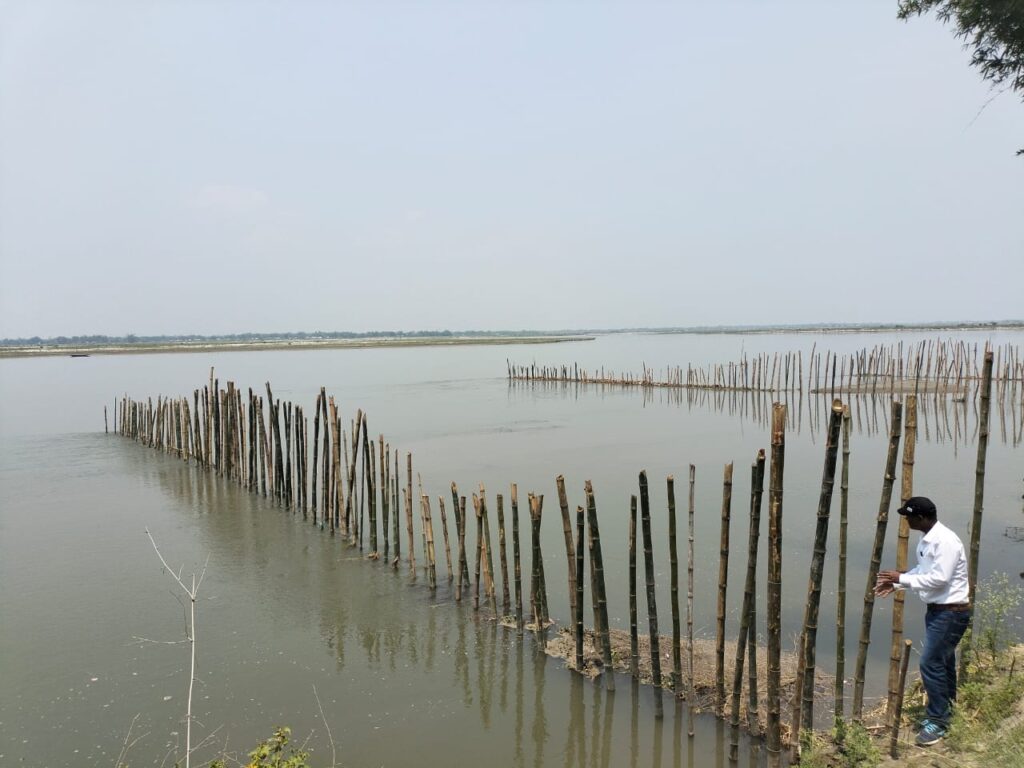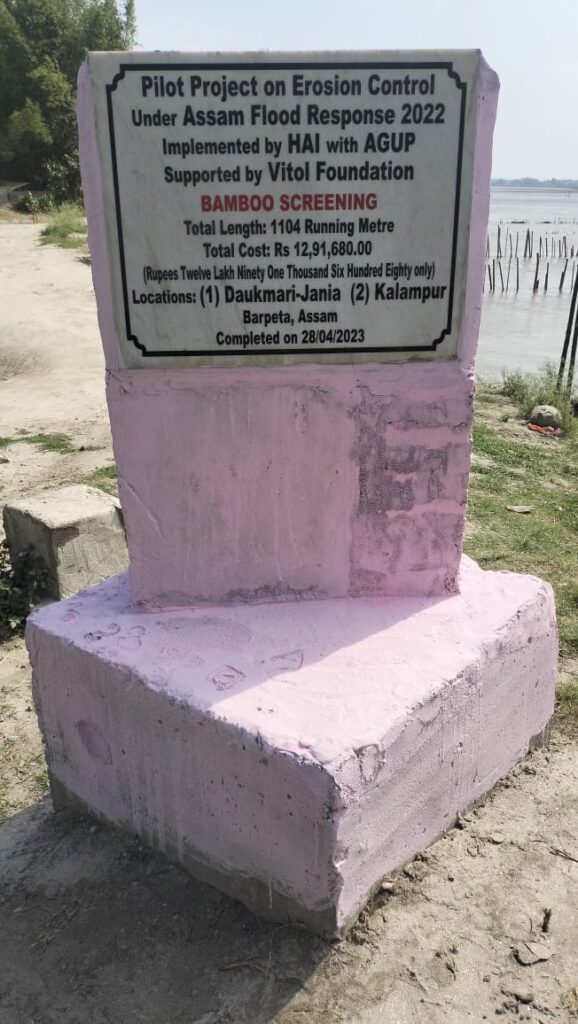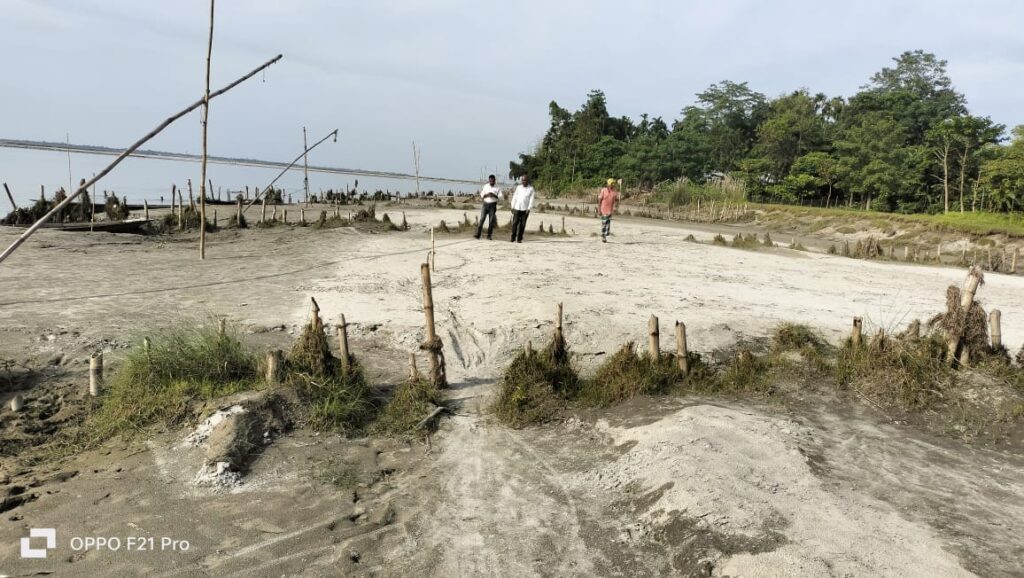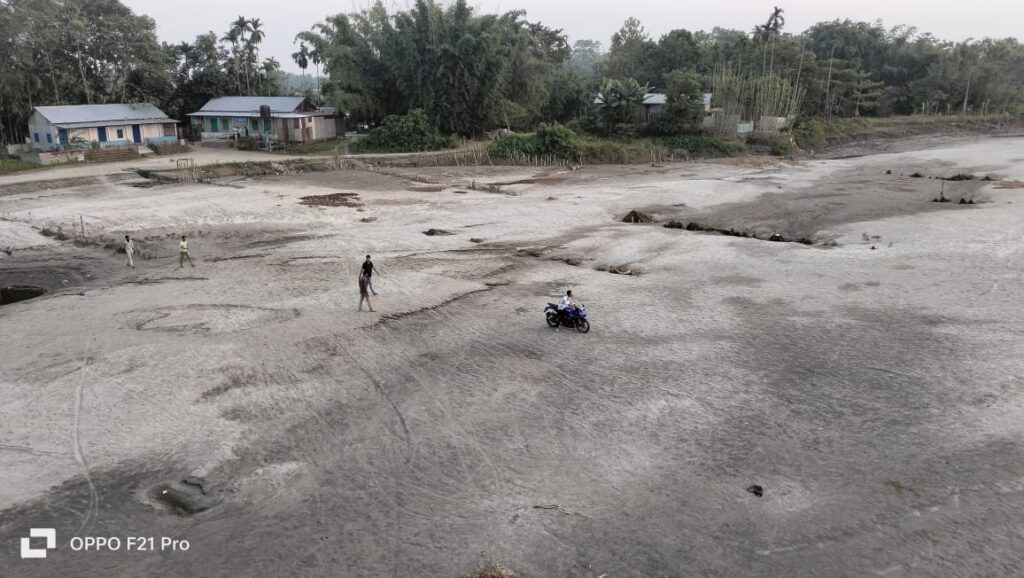A Triumph Over River Erosion in Barpeta

Bamboo Screening Success
Partner: Anchalik Gram Unnayan Parishad (AGUP)






Description of the Photos
Images 1 and 2: Bamboo Screening along the Riverbanks of Jania-Daukmari and Kalampur.
Image 3: Bamboo Screening Board
Image 4: Community Drive – Locals Eager to Help in the Initiative.
Images 5 and 6: The Results Showcased Reduced Erosion and Increased Siltation in the Treated Area.
Situation / Problem
Barpeta, a district located in the lower Assam region of the state of Assam in India, is a place of both natural beauty and historical significance. This district is nestled in the fertile plains of Assam and is endowed with abundant natural resources. One of its defining features is the Beki River, a significant right-bank tributary of the mighty Brahmaputra River.
The Beki River originates in the Bhutan region and flows through both Bhutan and the Indian state of Assam. It makes its way through Assam’s picturesque landscapes, carrying the essence of the Bhutanese mountains and the Assamese plains. This river plays a pivotal role in the lives of the people in the region, offering sustenance to the fertile lands it touches and supporting a diverse range of flora and fauna.
The Beki River is a source of great benefits for the local community, providing water that nourishes fertile lands and supports diverse flora and fauna. However, the river’s erosive actions have also caused significant disruption and adversity for the people living nearby, creating challenges that they have had to overcome.
Unfortunately, as erosion isn’t classified as a national disaster, government intervention is limited, and conventional solutions like Geo bags are often financially heavy.
Action Taken by Partner
Thus, HAI collaborated with its LOCAL member Anchalik Gram Unnayan Parishad (AGUP) and came up with a cost-effective bamboo screening river erosion treatment. The entire process was transparent and the budget was shared with the community. A total of 1104 running metres of bamboo screening were installed along the riverbanks in Jania-Daukmari and Kalampur. The results were reduced erosion and increased siltation in the treated area.
Outcome
The areas that were once deeply affected by river erosion are walkable, with youths seen riding their bikes over the stabilised siltation in Kalampur. Subsequently, several community groups started duplicating the same method with positive results.
For example, the Shaorachara community formed a committee and started the work. HAI and AGUP via LOCAL under Survivor and Community Led Crisis Response (SCLR) supported the committee in completing the unfinished part. Also, the community members have pooled their meagre earnings and labour to initiate bamboo screening independently. The community installed bamboo poles across the river to mitigate erosion risks. With a focus on protecting their agricultural land and houses, the community aims to secure over 2 kilometres of the river, benefiting approximately 2500 families. As the region expects a flood season to start at the end of April, the community plans to expedite the screening process, prioritising the installation of the remaining 1000 running metres of vulnerable areas through collective contributions.
The bamboo screening initiative has had positive impacts on approximately 1000 families in a village, and the SCLR support was just a small top-up, contributing to about 75% of the work accomplished by the community themselves. The community has even replicated and constructed a mini hydraulic drilling machine independently.
Background
In 2022, Assam faced severe flooding due to heavy rainfall and the release of water from the Kurishu Dam by Bhutan, affecting 5 million people. This crisis resulted in widespread damage to infrastructure, homes, crops, and the loss of livestock. The overall objective of the project was to support the affected communities with early recovery and disaster risk reduction interventions.
The strategic approach focused on addressing the unique needs of the affected population, aiming for a substantial impact on a large scale through comprehensive and targeted interventions. Assam is particularly vulnerable to soil erosion due to its geographical features, including steep slopes, high-intensity rainfall, and river systems with a high sediment load and frequent flood events.
As a result, local communities face recurrent displacement and the frequent loss of assets and agricultural land. To address this challenge, a bamboo screening intervention was initiated. To tackle rapid soil erosion, 650 metres of the riverbank adjoining the settlements will be targeted for the construction of soil erosion-mitigation measures, in association with the Water Resource Department and District Administration.
Credits: AGUP and LOCAL.
Local Organisations’ Coalition for Advancing Localisation (LOCAL)
Office of Humanitarian Aid International, Malkoti Apartments, A12 MBR Enclave, Sector 23 Dwarka
New Delhi-110077
website: www.hai-india.org | e-mail: [email protected]
